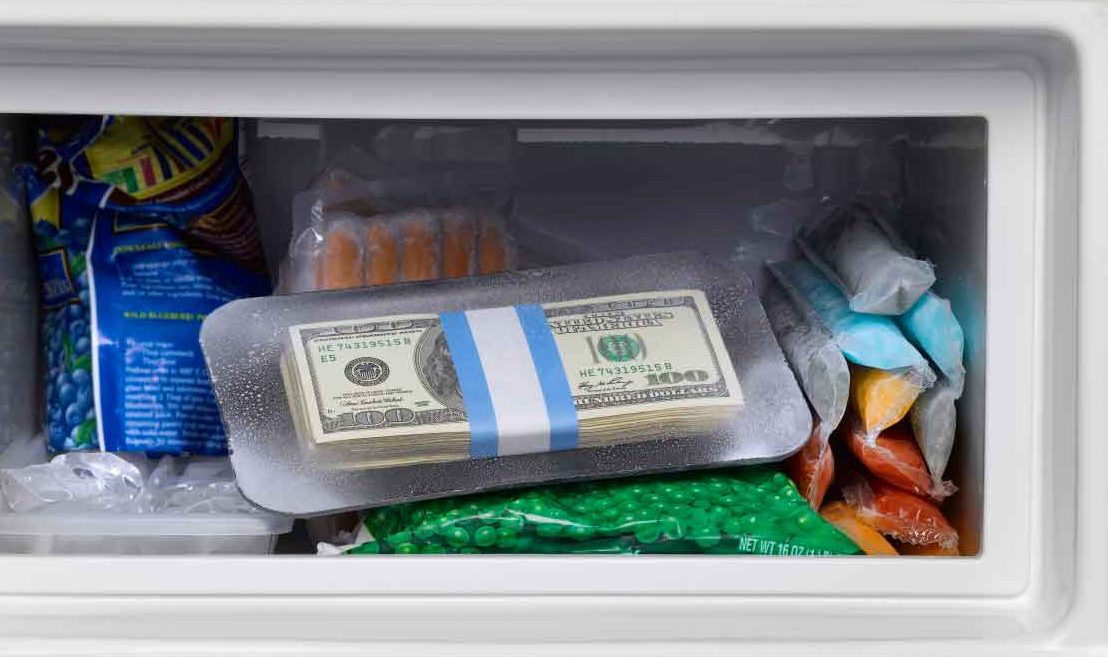Freezer Tricks to Save Time and Money

Your freezer can save time and money in ways that may surprise you. Here are some freezer tricks for your budget and schedule, some for more than just food.
Many people use freezers strictly for ice, liquid packs for emergencies, and frozen dinners and bags of vegetables. But you can also use your freezer to save time and money.
Your freezer is far more versatile than you realize. Exposing a variety of objects to freezing temperatures can have benefits ranging from pest control to stocking foods for longer.
YOU MIGHT ALSO LIKE: What Does a “Best By” or “Sell By” Date Mean?
Non-food freezer benefits
Your child sneezing while holding a stuffed toy can be a sign of dust mites. Putting stuffed toys in the freezer for 24 hours will kill the mites.
If you find gum stuck to clothing, try putting it in your freezer for several hours, until the gum is frozen and you can pop it off.
Dampen a pair of new tights or panty hose, then put them in a plastic bag. Place the bag in the freezer for 24 hours, remove it, and let the stockings thaw for a day. They may be less likely to run.
Put a candleholder with caked-on wax in the freezer. It will be easy to remove the wax after a couple of hours.
Some types of woodworms are so tiny their presence may not be obvious except for tiny holes they make in wood. If you buy an antique wooden bowl, spoon, or small statue, don’t assume tiny holes are from age. To be sure you aren’t bringing woodworms into your home, put the object in a freezer bag, and keep it in your freezer for two weeks. The cold should kill both the worms and their larvae.
If you use pencil eyeliner as part of your make-up routine, your pencil may break easily when it’s sharpened. That can waste quite a lot of the product over time. If you freeze your eyeliner pencils for an hour before you sharpen them, you’ll get a good point that doesn’t break as you sharpen it.
Tips on smart freezer food usage
When you’re freezing leftover dinners, put portions in plastic bags and flatten them. That will make food easier to stack in your freezer and defrost faster. You can make the portions smaller if you’re dieting or freezing portions for more than one person.
Always label the food; you can attach a label and write on it with a black marker. Include the date and the name or description of the food.
Freeze green or red grapes. Add them to drinks as non-diluting ice-cubes. Frozen lemon and lime slices also make good ice-cube substitutes.
Make coffee ice cubes to put into tepid coffee for iced coffee.
Freeze chunks of ripe bananas and then whip them in food processor. Add shaved dark chocolate or dark chocolate chips for a quick dessert.
You can save many other foods you never think to freeze. That includes:
- Cupcakes and loaf cakes
- Ripe avocados
- Butter and margarine
- Hard cheeses
- Soft bread
- Skim milk
- Chopped herbs
- Nuts (in a freezer bag)
- Baked or roasted or mashed potatoes
You can use leftover red and white wine for cooking, as long as you put it into a non-glass container.
It’s important never to take chances with food safety. If it smells or looks “off,” dispose of it immediately. Here are some basics about how long you can usually keep frozen food fresh.
Meat
- Meats attached to bones or whole chickens: six months
- Sausages, chicken breasts, meatballs, steaks, and burgers: three months
- Dishes containing cooked meat, for example, curries and casseroles: two months
Fish and seafood
- White fish, such as haddock and cod, cooked or raw: three months
- Oily fish, such as mackerel and salmon, and smoked fish, cooked or raw: two months
- Seafood, cooked or raw: one month
Dairy
- Milk: one month
- Salted butter: three months
- Unsalted butter: six months
- Double cream (whip with a little sugar first): three months
- Hard cheese (cheddar, Cheshire, Parmesan): three months
- Soft cheese (Brie, Camembert, goat’s cheese): three months
Vegetables
- Most vegetables (peas, beans, sweet corn, broccoli, cauliflower): eight months
- Root vegetables (carrots, parsnips): 10 months
- Mushrooms: three months
- Cooked tomatoes: four months
- Potatoes: three months
- Celery, onions, leeks: six months
Most fresh vegetables need to be blanched — scalded in boiling water for 1 to 2 minutes, cooled under cold water, and dried — before they are frozen, to remove dirt and bacteria and preserve taste, texture, and color.
Fruit
- Unsweetened, uncooked fresh fruit (such as raspberries, grapes, gooseberries, banana slices): four months
- Fruit stewed with sugar (such as apples, plums, pears, blackberries, apricots, strawberries): eight months
- Uncooked citrus fruit (whole, sliced, grated rind, or juice): 10 months
Bread
- Pita, naan, bagels: one month
- Crusted bread: two weeks
Cakes
- Cupcakes, loaf cakes: four months
- Pastries (croissants, hot cross buns): three months
Updated:
June 15, 2023
Reviewed By:
Janet O’Dell, RN